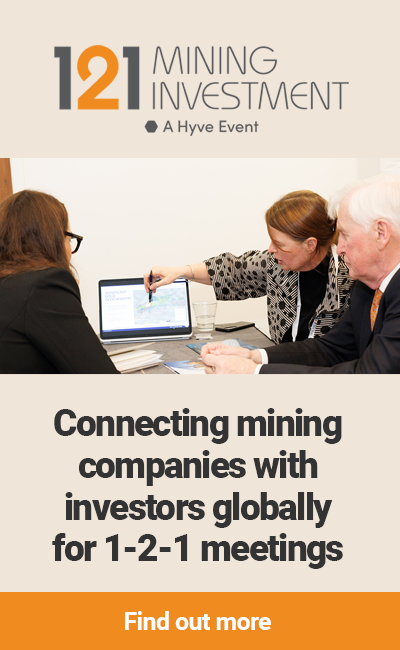AMP Capital is more of a generalist investment house. How do you and your team view resources investments, given that you invest in both industrials and resources?
We run a generalist small cap fund, with our investable universe extending to over 600 ASX-listed small cap stocks across all sectors of the market. Resources stocks currently make up around 20% of our benchmark. This is a part of the market which many other small cap managers don’t typically invest in, but which has historically been a good source of alpha generation for us. The flexibility in our mandate across different sectors allows us to invest in areas such as mining services and technology companies, which at various points in the cycle may offer more attractive risk/reward characteristics than the miners themselves. Our approach to investing in resources companies is the same as for any industrial stock – we focus on the three core components of our process which are earnings, sustainability and risk:
Earnings:
We do not profess to be experts in forecasting where commodity prices are heading and take more of a bottom up approach to investing. The focus is on miners that can outperform the market’s expectations on earnings in the medium term – this includes factors such as production growth, better cost performance, or mine life extensions.
Sustainability:
This includes an ESG analysis, but also looks at the quality of the mine and the management team. Identifying the right assets and people is extremely important, especially in this part of the market where so much of the investment thesis may hinge on a few key members of the management team or on a single mine.
Risk:
We are very unlikely to invest in companies which will disappoint the market’s expectations. Running earnings scenarios under various commodity prices, looking at operating track record, and balance sheet leverage are all core components of our risk framework. Miners in general are a riskier proposition than most industrial companies given the huge earnings volatility that can result from commodity price swings, and therefore are typically smaller individual stock weights in the fund. We are fortunate to have a large universe of stocks to invest in across both industrials and resources, and by comparing them on the same factors we can be selective in choosing the companies that best fit our process.
What are your main criteria in investing in small caps resources companies?
In last year’s ASX edition of The Assay we spelt out our framework for what we think makes a good investment in the resources space – ‘the five forces of resources’.
- Management
- Mine life and prospectivity
- Location
- Cost
- Balance sheet
While there is nothing groundbreaking among these five factors, the interaction between them is extremely important and can make or break an investment thesis. There are certain factors we won’t compromise on, such as management quality, but a big part of the process is looking at various trade-offs and working out what risk we are willing to take on for the return on offer. For example, do we prefer a high-cost gold miner based in Western Australia or low-cost operation in West Africa?
We are unlikely to invest in companies which will disappoint the market’s expectations – this means if we view a company’s production guidance or consensus expectations as unachievable we won’t invest at that point in time, and will come back to revisit the stock when market expectations have been reset to a more realistic level. It is a fact in Australian small cap investing that earnings are serially correlated, and one downgrade is likely to lead to more, with both management teams and consensus expectations slow to rebase. This is despite the valuation argument – a stock can trade at a big discount to peers on a continuing basis if they keep missing market expectations.
ESG-focused investing is accelerating, with large funds globally starting to exclude stocks that do not fit the ESG principles from their portfolios. We have had ESG embedded as a core part of our process since the fund’s inception nearly 8 years ago, and while we don’t automatically exclude any poor ESG stocks (such as fossil fuels), it does mean these stocks have a very high hurdle to get an investment from the fund. It’s been great to see a big increase in the number of small cap mining companies willing to engage and improve on ESG issues in recent years.
What sort of investments are you currently focused on?
Gold has been the hot commodity of 2020 and while we still see good opportunities across the gold space, investors will likely need to start being far more selective in picking winners. The September quarter results started to show cracks across a number of gold producers, with aggregate production declining and costs increasing across the space. Many older mines and processing plants are struggling, and some mine lives are shortening given the underinvestment in exploration in recent years. Quality shines through in gold stocks and is worth paying a premium for.
The lithium space is starting to get interesting, and while it is hard to determine when prices will turn around and start climbing, we are certainly getting more interested on a medium-term view. European subsidies for electric vehicles are flowing through to new vehicle sales and the battery supply chain in China, with lithium inventories being worked through, is seeing supply becoming tighter. While there is plenty of supply around, this is a difficult sector to bring on new mines and ramp up existing plants, and we favour existing producers in stable jurisdictions for leverage to the sector.
What are the investment trends you have seen throughout 2020 in the Australian mining sector?
Money has been flowing to the junior end of the market and there is broad based support for exploration stories for the first time in many years, with capital raisings by junior mining companies on the ASX and TSX up 80% in the past year, approaching levels seen at the previous peak in 2011. Many of these junior companies have seen their share prices run very hard and are now reliant on continued good drill results to back fill the share price gains. We believe mining services players are well placed to capitalise on this increase in spend across the sector.
In Australia we are starting to see some cost pressures creep into the sector, especially on the labour side as border closures and a ramp up of project work are making it harder for miners to attract and retain good people. Results in the September quarter were poor in aggregate compared to previous quarters, with costs rising, catch up in capital spend that was deferred during the height of COVID, and some older mines beginning to show their age with production issues. This has led to a large valuation gap opening between those miners delivering on guidance and those who are downgrading.
Where do you see growth in the resources space coming from in the next few years? Will exploration, expansions, or M&A stand out?
We think it will be a mix of all three but we do expect a strong growth agenda to be pushed by the miners compared to the previous 5 years, which has been more about cost out and capital discipline during a period of low commodity prices. Exploration spend has ramped up significantly in the gold space in particular (which accounts for around 50% of total exploration spend), and we expect this to be an ongoing trend for the next few years, provided commodity prices don’t fall much, as miners look to replenish resources and reserves and find new discoveries to add to their organic growth profile.
The majors are all pursuing large expansions in iron ore, although these are largely replacement projects to old depleting mines rather than a significant increase in supply. There aren’t many other ASX listed miners with expansion potential but there are quite a few new projects being developed by juniors, again focused in the gold space. Financing is readily available, and the time seems right to be bringing new projects online, however these companies will have to be very focused on good project execution in a rising cost environment.
M&A is something we expect to ramp up significantly over the next year. We have seen a few larger mergers in the gold space (Barrick/Randgold, Northern Star/Saracen, SSR/Alacer), but going forward we expect to see more bolt-on type acquisitions by existing miners with declining production profiles or short mine lives looking to fill an existing mill or boost their growth profile. The supportive gold price over recent years, coupled with good cost control, has led to balance sheets in the space being in excellent shape and is supportive of more M&A. Occasionally M&A makes a lot of sense in the mining sector however there is a long history of poor deals, so investors need to question a company’s motives for doing M&A. There is rarely a CEO who wants to put themselves out of a job by running a mine to completion and shutting the company down, so some may overpay for an asset just to keep the company running.
In terms of capital discipline and returns, what are you seeing in the resources space right now and what are investors asking for?
Miners have been doing a better job in terms of capital discipline in recent years and should be applauded for this performance. There is a lot more rigour around capital allocation, balance sheet management and capex spend compared to the early part of the decade where we saw mining companies gear up balance sheets to build large projects with marginal returns. Investors have benefited through improved cash flow and dividends.
In many cases however, the pendulum has swung too far, and we now see many small and mid-cap miners without an adequate pipeline of expansion or new projects to demonstrate production growth and to replace depleting mines. We have seen a pick-up in exploration however, given the long lead times to bring on a new deposit, there will be miners who will face the reality of a production gap and may need to consider bringing online marginal projects or pay up for acquisitions. This is rarely a good outcome for investors.
Dividend policies are hard to set and stick to in a sector as volatile as resources – the majors had to abandon their progressive dividend policies when the iron ore price collapsed in 2015-16, and payout ratios as a percentage of profits aren’t ideal given that profits may not match cash flows and don’t account for any large capital spend on expansions or new mines. We favour mining companies with a net cash balance sheet, allowing downside protection in times of weak prices and the ability to take advantage of opportunities, and a dividend policy based on a percentage of free cash flow generation.










